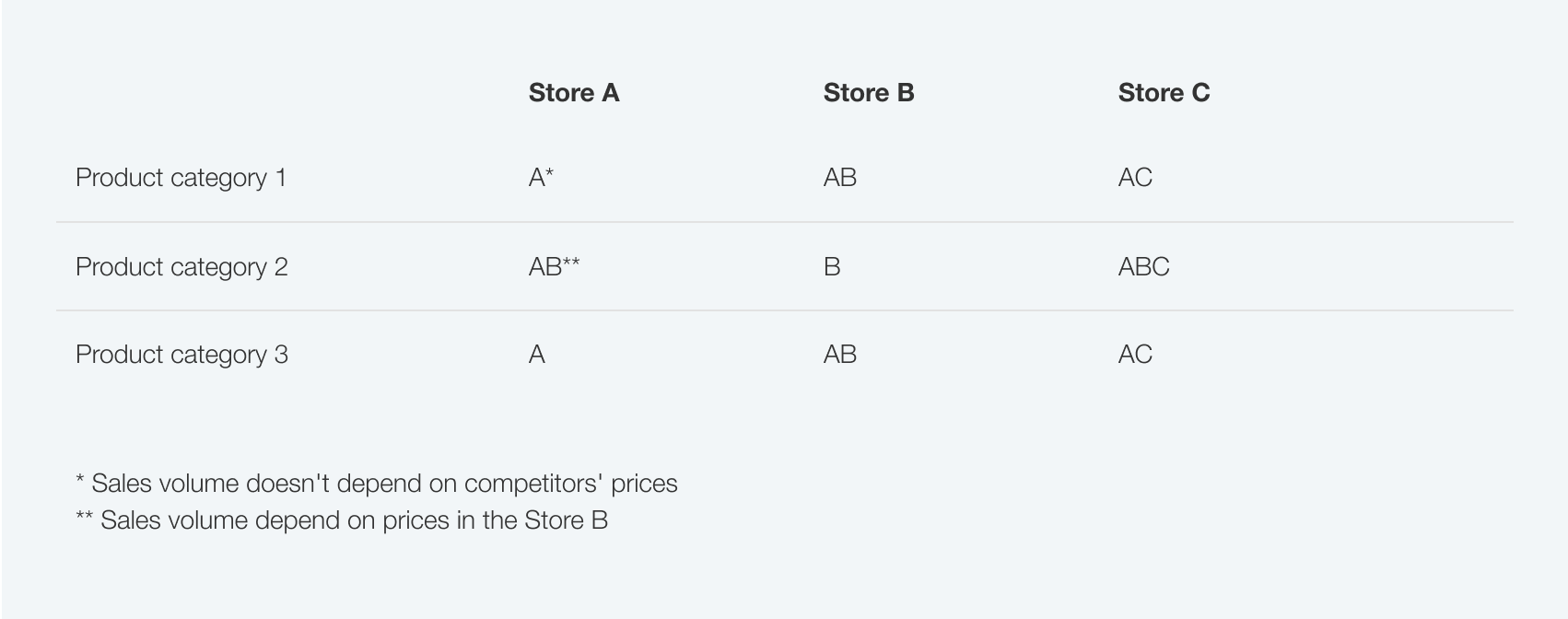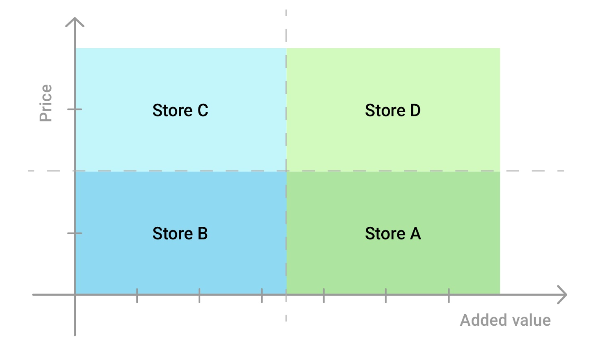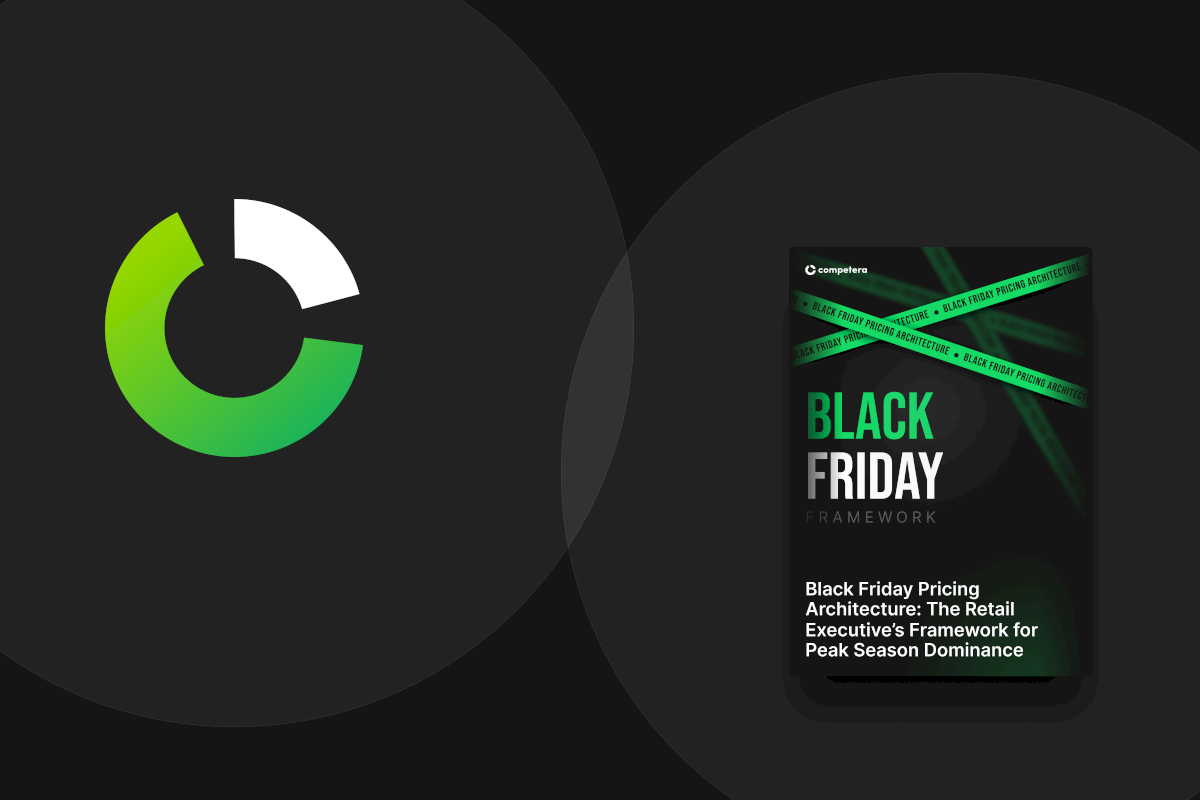Content navigation:
- What is price perception?
- What is price positioning?
- Factors that influence price perception
- Role of price perception in consumer buying process
- How to know your price perception without asking customers directly?
- Types of price positioning
- Factors influencing price positioning
- The impact of price positioning on consumer behavior
- Manage price positioning strategies with tech
What is price perception?
Price perception marks the way shoppers perceive the price level during either online or offline shopping experience. The fundamental category defining the essence of price perception is subjectivity. What it means is that the real price level should not necessarily match with the customers' price perception.
Here is an example: imagine you run a low-cost grocery store and decide to price bananas higher than competitors. Most likely, customers would continue buying bananas along with the other products while they perceive your prices as cheap ones. The point here is that price perception is a powerful tool that can either bring more revenue or destroy the retailer's financial health.
What is price positioning?
Price positioning represents the process of adjusting shop prices regarding the position a retailer wants to represent in the market. Price positioning is closely linked to price perception as these two categories are constantly shaping and impacting each other.
In this article, we're going to explore how to evaluate price perception and which factors contribute to price positioning the most. We're also going to dive deeper into price perception and price positioning management and explore how advanced pricing software can deal with it. This entry could serve as a guideline helping retailers to capitalize on price perception. Let's start!
Factors that influence price perception
Price perception is shaped by multiple factors, including pricing and positioning strategies, consumer expectations, and market dynamics. One key element is perceived pricing, where customers compare a product’s cost to its value. Psychological pricing and dynamic pricing influence how buyers evaluate a price and positioning model, affecting consumer behavior and decision-making.
Brand identity also plays a significant role in shaping perception price. Established brands with strong value propositions often justify higher pricing positioning, while new entrants must rely on discounts, promotions, or affordability to attract a target audience. Additionally, competitor benchmarking and competitive analysis affect positioning price strategies.
Market demand and supply conditions, along with profitability considerations, further impact price perceptions. Businesses must, therefore, optimize pricing tiers and reduce the expectation gap to maintain customer loyalty. By leveraging feedback, brands can adjust their position price strategies for better market competitiveness and enhanced shopping experience.
Role of price perception in consumer buying process
The perception of price is a critical factor in consumer decision-making. Before making a purchase, buyers evaluate a product’s price positioning in relation to its value. A well-implemented positioning by price strategy influences customer expectations, ensuring that pricing aligns with brand positioning.
Psychological pricing and value-based pricing play key roles in how consumers assess pricing positioning. If a product is perceived as too expensive compared to competitors, it may deter purchases, while an unexpectedly low perceived price can raise concerns about quality. Discounts and promotions temporarily shift perception pricing, making the product appear more attractive.
Brands must balance affordability and profitability while addressing market demand. Consumer trends, preferences, needs and wants change over time, requiring businesses to adapt their positioning pricing approach. Competitive analysis and consumer feedback help refine pricing tiers to maximize profit margins without alienating customers' needs.
The pricing and positioning strategy also affects customer loyalty and satisfaction. Transparency of communication and reducing the expectation gap ensure trust, leading to repeat purchases. Positioning price effectively within a pricing model strengthens a brand market presence and influences long-term consumer behavior.
How to know your price perception without asking customers directly?
Now, when you know what price perception is, the next question that comes to mind is ‘How can I know what customers think of my prices?’. But, before answering, we must admit that it is not possible to inquire or capture perception price comprehensively because of the two major reasons. First, as we’ve mentioned below the category is subjective and it’s not easy to get into the mind of your customers. The second reason stems from the dynamic essence of price perception i.e. it is not stable and might change under particular circumstances.
Price perception is a complex phenomenon shaped by a number of dimensions. The change of one of these elements, eventually, impacts the overall price perceptions. That’s why deconstructing customers’ perception into structural elements is a good starting point to find how shoppers might feel about prices without asking them directly.
Let’s have a closer look at the elements shaping retailer’s price perception:
- Product quality. For customers, price is an indicator of quality. The general rule implies that the higher priced products are expected by customers to have better quality. What it means in terms of price perception? Retailers should consider the quality-price relationship in their pricing or promo strategy. For example, if you launch a discount to liquidate stock and put the same price for both low and high-quality products, the customers might perceive low-quality products as overpriced. It means retailers should differentiate pricing in regard to product quality, otherwise, their price perception could be distorted. This notion is especially relevant during the periods of markdown.
- Consumers’ price-consciousness. Buyers are not equally conscious about every product price. There are particular groups of products towards which shoppers feel more price-conscious. Usually, these are the products called 'best price guarantee' or BPG. They are priced in regard to competitors being crucial for retailers in terms of either protecting or increasing their market share. The prices for this kind of products are also an important element shaping overall price perception. Here is an example: if you price BPG products higher than your competitors while offering lower prices for all the other types of products, your store would still be perceived as rather expensive.
-
Promo. While describing the dimension of product quality above, we’ve partly mentioned the importance of promo differentiation during the markdown. Retailers should be particularly careful during the markdown periods: willing to clear stocks as promptly as possible, they might unintentionally undermine all the previous efforts to shape and maintain particular price perception. Many retailers still use traditional approaches to markdown without noticing the devastating impact it has on price perception.
-
Psychological factors. Retailers shouldn't forget that human behavior is not always rational. In his best-selling book "How Customers Think: Essential Insights into the Mind of the Market", Harvard professor Gerald Zaltman argues that 95% of all purchasing decisions are subconscious. The luxury brands are a good example to show how psychology is linked to price perception. Buying premium or luxury segment products is often a means of demonstrating one's social status. This insight implies that shoppers want the products to be expensive even if they are explicitly overpriced. So, if you're selling premium products make sure your pricing is coherent with buyers expectations and needs.
Based on this, we can make a list of simple questions helping to get an overall impression of your price perceptions without actually asking customers:
- Is your pricing differentiated in regard to the qualitative features of products?
- Are the BPG products priced competitively and coherently with your positioning?
- Is your markdown process optimized (e.g. promo depth for various products is diversified etc)?
- Does the prices for exclusive range meet customers expectations?
Types of price positioning
Businesses use various pricing positioning strategies to shape customer perception and differentiate from competitors. The most common approach is value-based pricing, where pricing tiers align with the perceived value proposition. This strategy targets consumer expectations and fosters brand loyalty.
Premium pricing is another positioning by price technique, where businesses position their products as luxury items. This method appeals to consumers who associate higher pricing with superior quality and exclusivity. Conversely, discount pricing targets affordability, attracting cost-sensitive buyers.
Psychological pricing influences perception of price by utilizing price endings like “.99” to create an impression of a better deal. Dynamic pricing optimization adjusts prices based on demand, competitiveness, and market conditions, optimizing profitability and profit margin.
Position pricing also varies by segmentation. Some companies adopt benchmarking tactics, adjusting pricing and positioning based on competitor pricing. Others focus on differentiation, using pricing to emphasize unique product benefits.
Effective positioning pricing involves strategic decision-making, balancing profit margin, affordability, and market demand optimization. A well-implemented position price strategy ensures that customers perceive the product as a valuable choice within its pricing model.
Factors influencing price positioning
Several elements shape perceived price positioning and influence how consumers perceive pricing and positioning within a market. One of the most critical factors is competitor pricing. Businesses must engage in competitive analysis to ensure their positioning price aligns with industry standards.
Perceived pricing is also affected by consumer expectations, dominating market trend, and brand identity. A strong brand can justify higher position pricing, while lesser-known companies may need to use discounts and promotions to attract buyers.
Market supply and demand fluctuations impact pricing position, requiring businesses to adjust pricing dynamically to maintain profitability. Additionally, psychological pricing strategies help shape consumer behavior, influencing how buyers perceive value and affordability.
Pricing positioning must also consider customer preferences and segmentation. A clear value proposition that communicates product benefits effectively enhances pricing and positioning. By optimizing price and positioning pricing, businesses strengthen their competitive advantage while ensuring long-term customer satisfaction, even for products with low price elasticity of demand.
The impact of price positioning on consumer behavior
Price positioning plays a crucial role in shaping consumer behavior by influencing decision-making and pricing perception. When consumers evaluate a product, they consider its positioning pricing relative to competitor offerings and their own expectations. A strong pricing position can drive customer satisfaction, reinforcing brand preference and repeat purchases.
A well-executed pricing and positioning strategy also affects consumer psychology. Psychological pricing techniques, such as value-based pricing or discount pricing, can create a perception of increased affordability. Conversely, premium pricing enhances perceived value, targeting customers willing to pay more for quality.
You have to manage position pricing carefully to maintain market competitiveness. If a price perception is too high without a clear value proposition, customers may switch to competitors. Transparency of communication and strategic pricing positioning ensure that your brand remains appealing to its target audience, driving long-term profitability and consumer trust.
Manage price positioning strategies with tech
Usually retailers are interviewing customers in order to understand how they see their brand compared to competitors. At Competera, we developed another way for you to calculate this. First, we need to see what competitors affect the sales volume for every category in each store or channel. Let’s use the table below as an example.

We can see that store C is influenced by competitors more than other. This means its customers not necessarily consider prices as “optimal” and often compare them to competitors. The sales volume depends on demand elasticity and competitors’ prices for the largest amount of products here, which also means that the store C has a high cross-elasticity. Now, let’s see how these shops are ranked.

Store A gets the highest added value, because its customers have a high level of trust taking for granted that the prices are low. Store B depends on its competitors with less optimal prices from the buyers’ viewpoint even though the prices in store B are just as low as in Store A. Store C has unreasonably high prices for their main categories compared to competitors, and has low added value. We added another type, Store D, which is a luxurious brand with a loyal customer base, yet still high prices. Based on the image, retailers should try keeping their business within the green quadrants of the graph as it helps them to get more revenue while keeping customers loyal.
The simple example we’ve outlined also shows the importance of identifying your real competitors and true KVIs as these products impact price perception and customers’ loyalty the most. And that’s where you need advanced pricing innovation. Competera’s recurrent neural networks analyze retailer's and competitive historical data to find the real impact every market player has on sales as well as identify true KVIs in your portfolio. This, in turn, is the key to reinforce customers’ loyalty and increase market share. Click below to learn more and explore new opportunities driven by innovation.
FAQ
Price perception is important as its effective management can sustain the consumers' willingness to pay and keep them loyal.
In case the price is unexpectedly low (except for luxury items), consumers would buy more products. In contrast, an unexpectedly high price would lead to a drop in demand.






